- Y.SH
- information
- 2894 views
- 0 comments
Every country is featured with its culture and traditions. With a rich history and culture, there are plenty of original Iranian Cultures and Traditions which can be attractive and new for tourists and culture lovers. Iranian traditions are rooted in the history and civilization of Iran, which can be said to have originated years before the emergence of the Iranian Empire and its great king Cyrus. Except for the religious ceremonies, most of the rest belong to pre-Islamic Iran and Zoroastrianism.
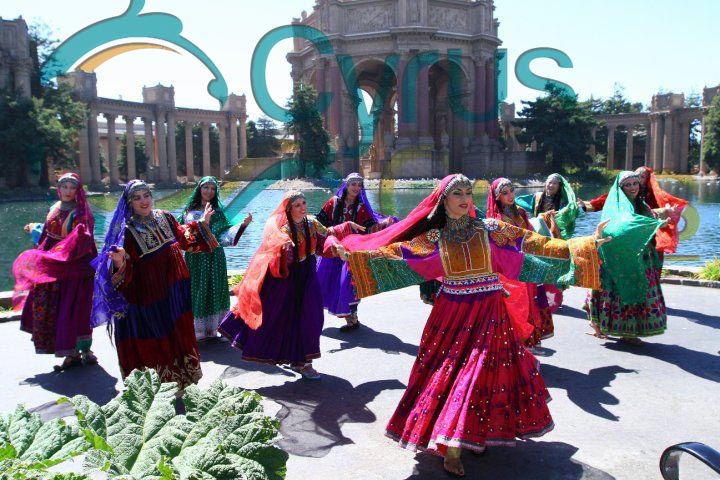
Iranian Cultural
Iran, officially the Islamic Republic of Iran, is a country in Central Eurasia and Western Asia. Unsurprisingly, Iranian culture has long been dominant in the Middle East and Central Asia. Persian was the language of intellectuals during much of the 2nd millennium; before that, it was the language of religion. Iran is a diverse country consisting of people of many religions and ethnic backgrounds cemented by Persian culture.
Traditional and Cultural Festival in Iran
Festivals and celebrations indeed reflect the cultural beauties of a region; it would be a matchless experience to visit a destination during festival days and join these cultural treasures along with enjoying the tangible heritage. Iranians are a multi-ethnic nation and a mixture of different religions; this diversity leads to interesting sets of popular festivities celebrated in Iran around the year in different parts of this vast land.
The festive days in Iran have different roots, such as ancient beliefs of Zoroastrianism culture based on the Jalali Calendar or Islamic events based on the Lunar Calendar. We can categorize these holidays and events into two titles. The first one is Persian Festivals which mostly have Zoroastrian roots; the second category is Harvest Festivals of unique Iranian products.
1. Iranian festivals have roots in ancient times and are primarily Zoroastrian. The famous ones are celebrated all over the country, but some are just celebrated in specific regions and provinces.
Cyrus Crafts; Luxury & Unique Products
Nowruz
The Nowruz festival celebrates the beginning of spring and is also celebrated in other countries besides Iran, such as Tajikistan and Azerbaijan. Nowruz holidays end on Sizdabedar, the 13th day of the Persian new year (April 2). It's nature day in Iran, and most people go picnicking in nature during this public holiday, and the famous food that most Iranian people eat on this day is Ash Reshteh.
Chahrshanbe Suri
Chaharshanbe Soori is a combination of two different words: Chaharshanbe means Wednesday, and Soori means Red. This family-run ceremony happens just before the last Wednesday of each Iranian solar year, on the evening of the last Tuesday. Iranian People celebrate Charshnbeh Soori by lighting a fire, jumping over it, and lighting up the sky with colorful fireworks. When people jump over the fire, they sing a particular song:
"Sorkhi-ye man az to, Zardi-ye to az man," means "Give me your fiery red color and take back my wintry shallowness yellow."
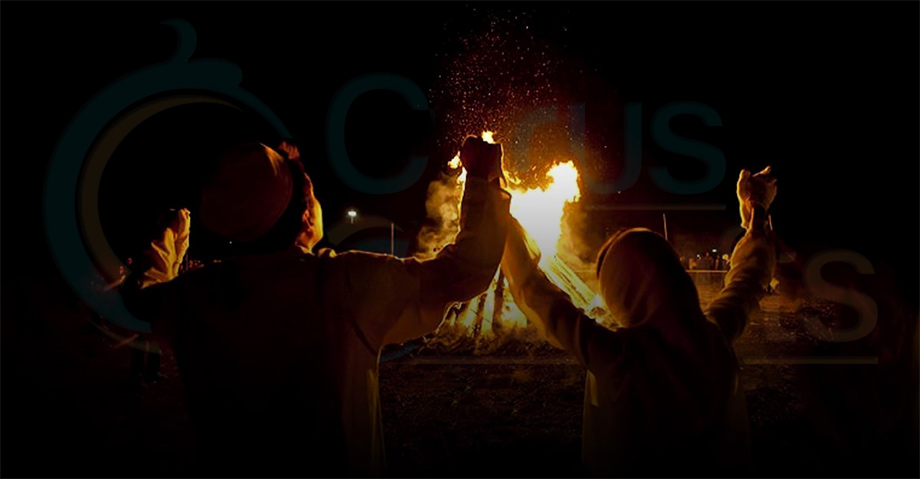
Yalda Night (December 20)
Yalda Night, also known as Shab-e Cheleh, is considered the last night of fall and the first night of winter in Iran. On Yalda night, families gathered to move from the lengthiest night to the day's light.
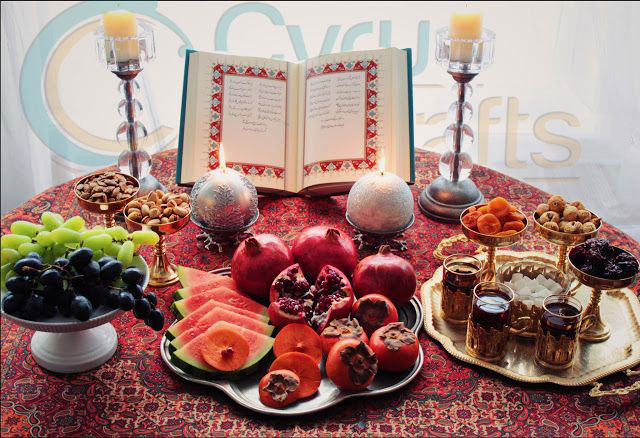
Mehregan (October 2)
Mehregan is the second most crucial Persian festival after the New year festival, Nowruz, but it is not celebrated all over the country and is regarded as a festival for the Zoroastrian community. It is celebrated in honor of Mithra or Mehr, the God of love and friendship. Mehregan was also a celebration of the fall harvest, thanking God for a flourishing season ahead. Currently, in Yazd and Kerman, Zoroastrians celebrate this day by praying, slaughtering a sheep, wearing novel clothes, and preparing a table of delicious things such as sweets, nuts and fruits.
Sadeh (January 10)
Sadeh festival is one of the ancient Persian traditions celebrated by Zoroastrians. It is celebrated mid-winter up to 3 days, 40 days after the night of Yalda. During the winter, people light big fires, gather around them, perform rituals, and donate food to bring warmth and light to defeat the darkness and cold.
2. Harvest Festivals are getting more popular daily among travelers due to the variety of products in the diverse climate in Iran. Unique Persian products such as Saffron, Pomegranate, Pistachio, Date, Barberry and Pink Rose are the essential products that farmers around the country hold during annual harvest festivals.
Saffron Harvest
Saffron plays a central role in delicious Persian food and sweet recipes. This expensive flower thread is used in Iranian Carpets, Persian Rugs and Yarns. Every year during November, farmers hire many local people to harvest their saffron. Each ounce of Red Sargol of Saffron requires 7000 Purple Saffron plants to harvest. The saffron flower should be hand-picked, and the stigmas should be taken precisely. Saffron tours are available to help you participate in this unique process.
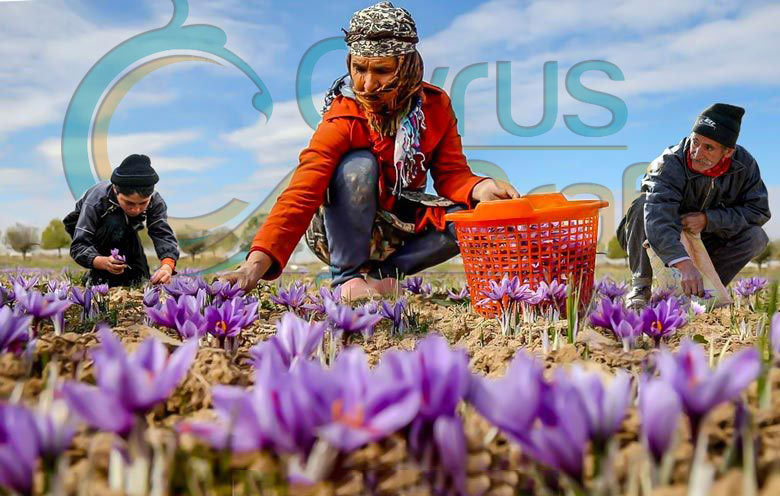
Rosewater Festival
During springtime, from early May to mid-June, based on the weather situation, Rose-Water Festivals are held in Iran, especially in Kerman, Fars and Isfahan provinces. Local people harvest the pink roses called Gol-e Mohammadi and boil them in a copper pot to extract rosewater. The Flavour and scent of Iranian rose water (Golab) are exceptional. Iranians use it widely in their cuisine, medicine and religious places; some cities, like Qamsar and Niyasar in Kashan, Meybod in Fars and Laleh-zar district in Kerman, are famous for their rosewater festivals.
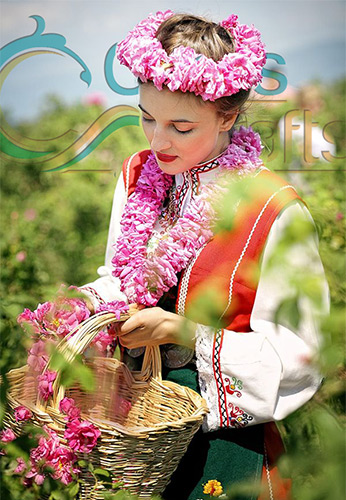
Pomegranate Festival
Pomegranate trees have a long history in Iran since these trees were planted in temples in the era of Zoroastrianism. At the beginning of fall, harvest celebrations are held in Iran; during the pomegranate festival, people play traditional local music, children wear colorful clothes, youngsters play local games, and farmers represent their crops and many other products from pomegranate.
Traditional Iranian Clothing
This country's clothing style has been performed with extraordinary elegance and designs for many years, from north to south, east to west, each with its style for women and men.
One of these fantastic roots of the different ethnicity of Iran, which is so evident to both Iranian and foreign people, is the Traditional Clothing in Iran. Several factors contributed to this phenomenon; their geographical location, religious beliefs, social conditions, originality and nationality; thousands of years ago were united by Cyrus the Great and became a multi-cultural country called Iran. With the wide variety of traditional Iranian men and women clothing, from uniquely shaped hats and headdresses designed to eye-catching color combinations worthy of a catwalk, we explore the traditional dress of some of Iran's most extraordinary tribes in the following.
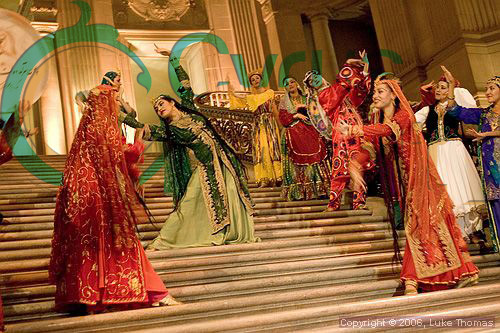
Bakhtiari
The clothes of the Bakhtiari nomadic tribe are versatile by design and evolved to adapt to the extreme weather conditions they may encounter during migration – from the grassy plateau of the Khuzestan region to the mountainous Chahar Mahal. While men wear tunics, wide trousers fastened at the ankle, and wool skullcaps, the women are often seen in colorful, layered skirts paired with matching vests. Their long headscarves are embellished with hand-stitched designs or ornaments.
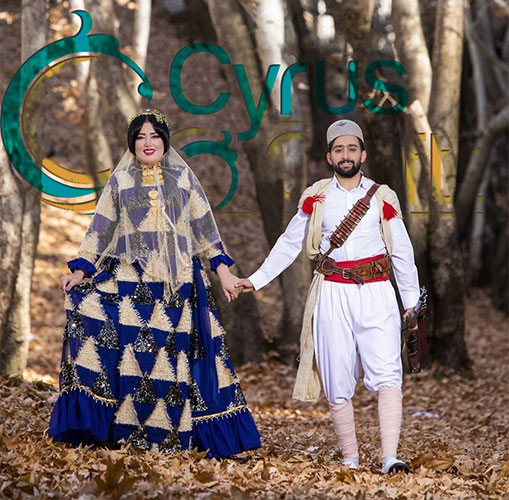
Qashqai
Mainly from Turkic, Kurdish and Arabic origins, the Qashqai is a clan of nomadic tribespeople, some of whom still follow the ancient migration routes. Women are distinguished by their voluminous, multilayered, colorful skirts and long headscarves pinned under the chin, which allow loose strands of hair to frame their faces. The men wear collarless white shirts and long cloaks, secured around the middle by a cummerbund. Their round Dogushi, or "two-eared" hats, are made of sheep's wool felt and are unique to the tribe.
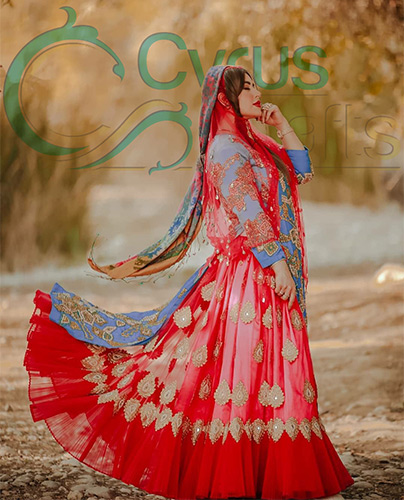
These two Iranian tribes are the ones whose antique and beautiful handwoven carpets are famous worldwide.
Baluch
The Baluch people hail from southeastern Sistan and Baluchestan provinces bordering Pakistan and Afghanistan; therefore, it's not surprising that their traditional clothes closely resemble the voluminous shalwar kameez (loose trousers with a long shirt or tunic) worn in those countries. Along with wide-legged trousers and colorful embroidered knee-length dresses, women adorn themselves with gold bracelets, necklaces and brooches. A second, longer shawl often covers their head and shoulders. Long pants, loose-fitting shirts and a turban are customary for men.
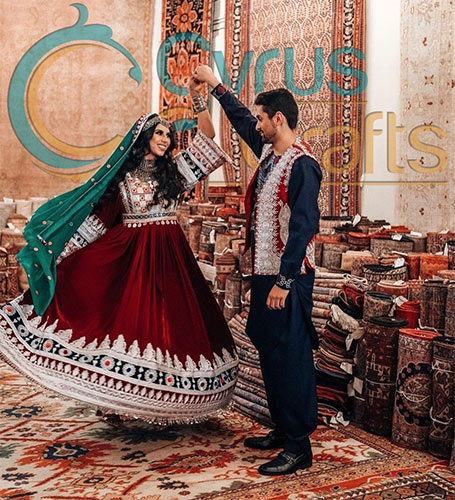
Turkmen
Living in northern Iran for the most part, along the border with Turkmenistan, Turkmen have lived for hundreds of years as a nomadic tribe. Today, they're more rooted, with many living in permanent homes and tents, although some continue the nomadic tradition. Earthy tones dominate the traditional dress of both Turkmen men and women. Wearing long dresses with open robes, women often conceal part of their face with a cloth hanging just below the nose. Wool hats, worn to protect against cold weather, are a prominent feature of men's dresses.
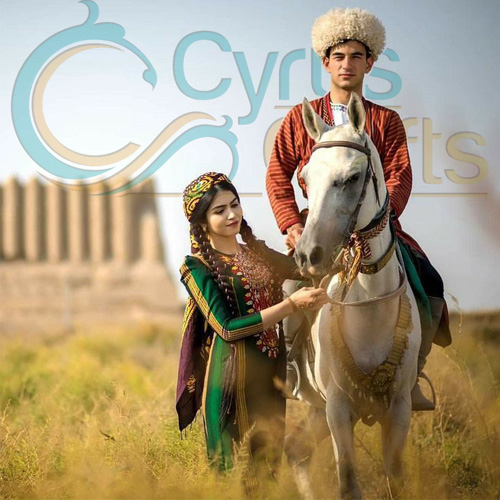
Gilak
Native to the northern region of Gilan, the Gilak people are not traditionally nomadic, preferring to farm and raise livestock in the Alborz mountain range and surrounding plains. The women's dress comprises long pleated shirts layered with black velvet vests trimmed with bright embroidery, and in place of the wide-legged trousers that are common in traditional Iranian dress are floor-sweeping skirts decorated with colorful horizontal stripes. The men's wardrobe is more muted, with a black-and-white theme punctuated by a bright splash of color in the socks or wide cotton waistband.
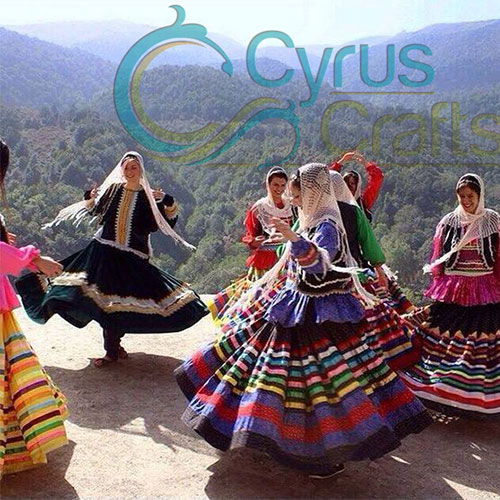
Traditional Iranian music (Classic Music)
Original Iranian music, also known as Iranian traditional and classical music, includes a variety of instruments and different types of melodies. This type of music, which existed before Christianity and has reached our time mostly orally and by heart, is one of the prominent manifestations of Iranian culture. Iranian music has greatly influenced the music of most parts of Central Asia, Afghanistan, Pakistan, Azerbaijan, Armenia, Turkey, and Greece.
Radif (a collection of several traditional melodic figures) was inscribed on the UNESCO World Heritage List on October 2009 as the first independent Iranian intangible heritage.
The traditional music of Iran is a message, a call from the artist's innermost consciousness. Deeply intertwined with Iran's ancient history and culture, it is an expression of the joys, loves, sorrows, efforts and struggles, all the many victories and defeats that the people of Western Asia have experienced over the millennia. It is a miracle that these people have kept their music intact despite numerous murderous foreign invasions imposing their art, lifestyle and a great view of the world on their invaders.
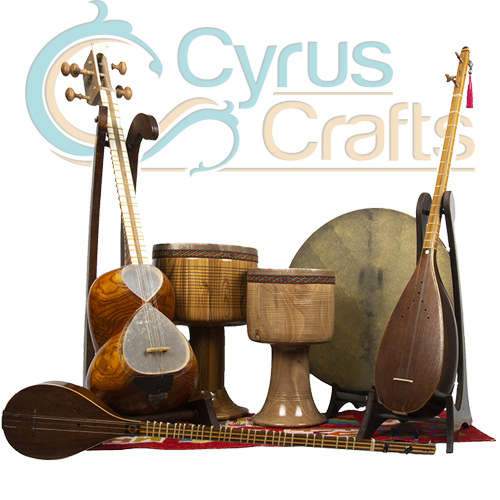
Iranian Traditional Art & Handicrafts
Iranian art and architecture reflect a 5,000-year-old cultural tradition with a significant development over history. Numerous artists have produced beautiful items that are known throughout the world. The most famous Iranian handicrafts include the Persian Carpet, Minakari (carvings on silver), Miniature, Khatamkari, and Ghalamzani (Metal-work).
Iran has many ancient crafts. The extent and breadth of these branches can be divided into several subclauses, which indicate the diversity and flourishing of the level of traditional arts and their roots in the rich history of Iran.
Persian Carpet
Persian Carpet is an inseparable item from Iranian art and culture. It is undoubtedly one of Persian's most distinguished manifestations, dating back to Ancient Persia (c.500 BC). The "traditional skills of carpet weaving" in Fars Province and Kashan City were inscribed on the Intangible Cultural Heritage Lists of UNESCO in 2010.
The pattern of carpets reminds you of the Persian garden, full of florae, birds, and other animals. Wool, cotton, and silk are the most common materials in carpet weaving.
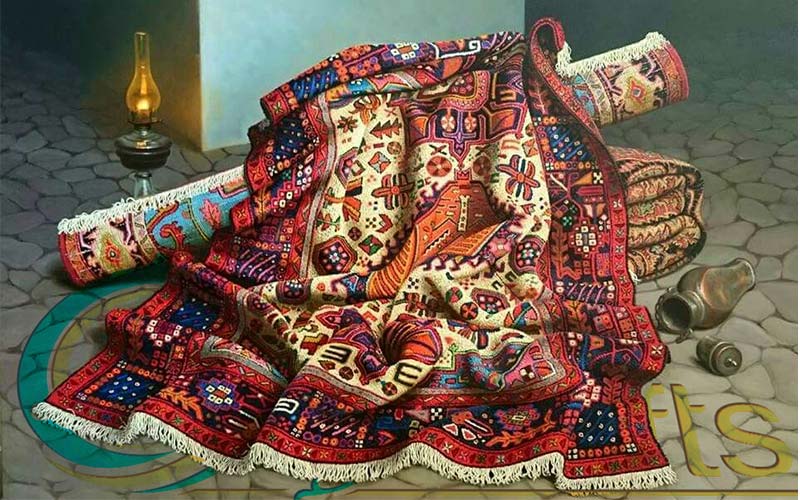
Minakari (Enameling)
Enameling or Minakari is the art of using fire to decorate metal and tile with mina glaze. The patterns used for enamel works are traditional designs depending on the artist's preferences. In Iran, enameling is mainly done on copper and silver. Enamel working and decorating metals with colorful and baked coats is one of Isfahan's distinguished courses of art.
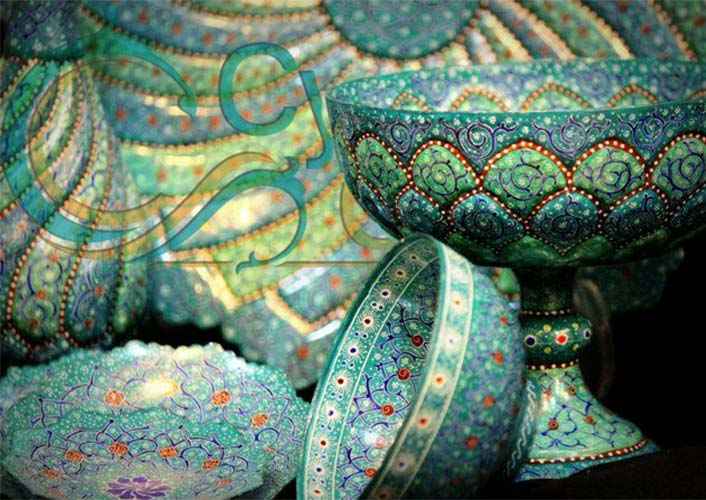
Miniature
The Persian Miniature is a rich, detailed painting with religious or mythological patterns. According to the evidence, the art of miniature painting in Persia started in the early centuries of early post-Islam and after the collapse of Sassanians. However, art flourished in the 13th century during the Safavid dynasty. One of the specifications of Iranian Miniature is the bright coloring in which the pigments are mineral-based.
Khatamkari
KhatamKari is the art of decorating wooden surfaces with small mosaic-like veneers in the form of triangles made of different woods and materials. These materials include Areca wood, Ebony, the wood of Citron Tree, Jujube wood, and bones of camel, horse, and cow.
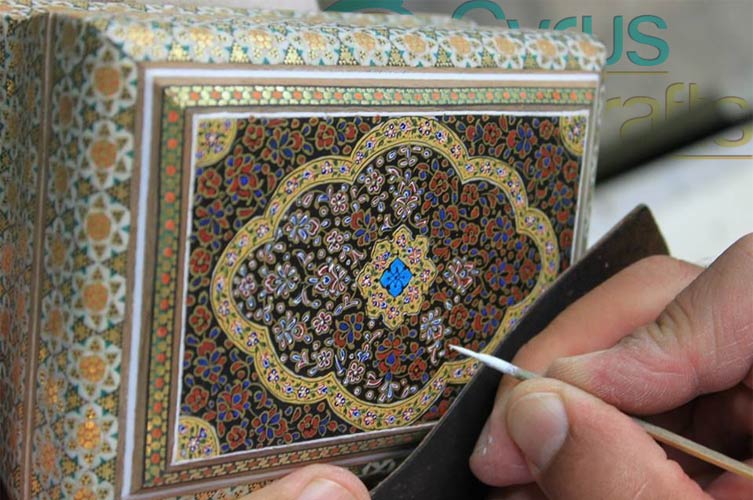
Ghalamzani (Engraving)
Ghalamzani is the art of carving superb designs on metals such as copper, brass, silver, and gold. Like other Iranian arts, Isfahan is the main center for engraving, with significant development in the Safavid dynasty.


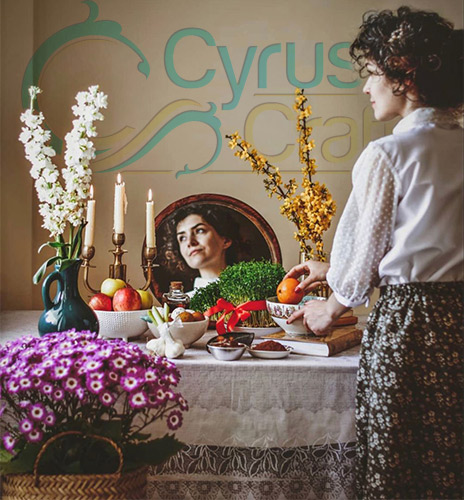










Comments (0)